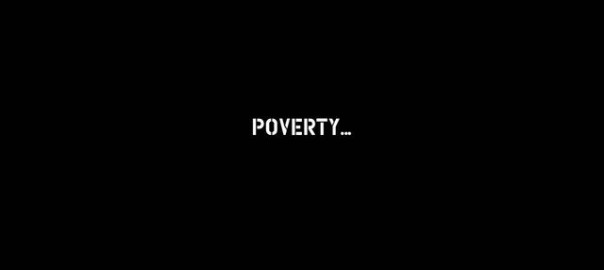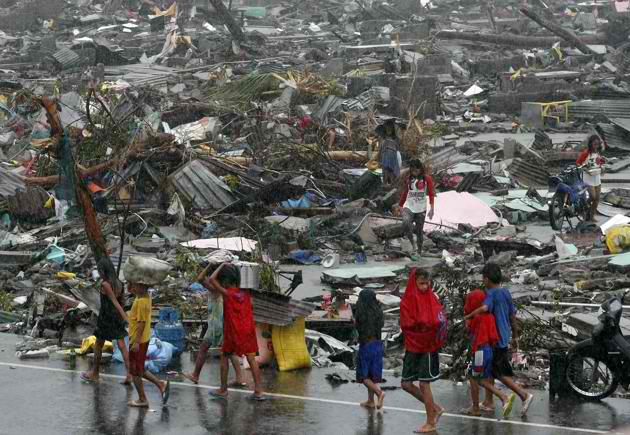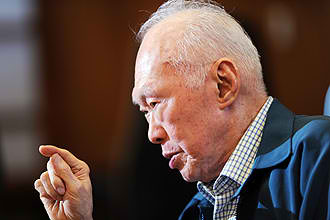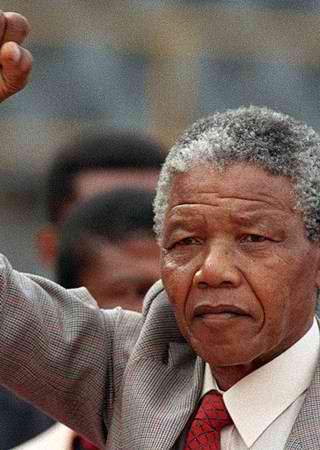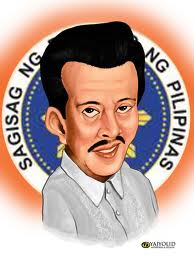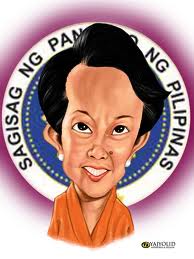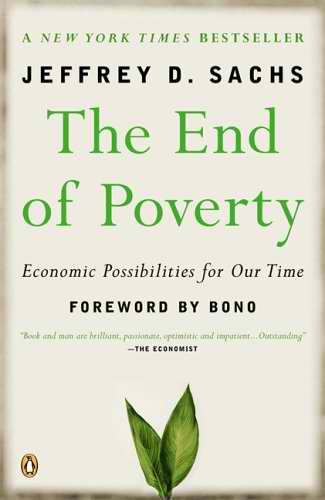ME: KNOCK! KNOCK!
My sister pretends not to notice, continues playing with I phone.
ME: (pokes sister’s ribcage) KNOCK! KNOCK!
SISTER: Looks up, sour expression. You’re so annoying. Goes back to I phone.
ME: Just say “who’s there?” It won’t kill you… please!
SISTER: Ugh just so you’ll shut up already…who’s…there…
ME: Aid!
SISTER: Huh…aid who?
ME: Aid-dunno bout you…but I’m feeling 22 hu hu… HAHAHAHAHAHAHA!
SISTER: Nice…. can I Hay Day in peace now? Goes back to I phone.
I wish I can say that this very polite exchange happened a long time ago when my sister and I were in Kindergarten. But no this was just last week when she was in town visiting me.
Usually (at least I’d like to think) my material is rock-solid, an infallible L-O-L juggernaut.
Lately though, I’d been feeling quite… Unfunneh. Like I’d suddenly lost the tickle in my belly.
Tickle. tickle. Tick. tock.
Maybe the confluence of unfortunate events the past few months had finally caught up with me.
November 2013. The world’s fiercest typhoon ravaged many parts of my country, the Philippines.
So many lives destroyed, so much grief, too much sorrow, one can only wonder where God is in all these…
In my quiet moments…I am still haunted by the unfairness of it all.
What did Filipinos ever do to deserve this?
Just when the economy is picking up, just when the political situation…
Well, the political situation is another one of those stressful things.
How has Philippine politics been reduced to a mere caricature of its once distinguished self?
Headlines these days are overcrowded with exposes and fugitives, scams and whams and shams.
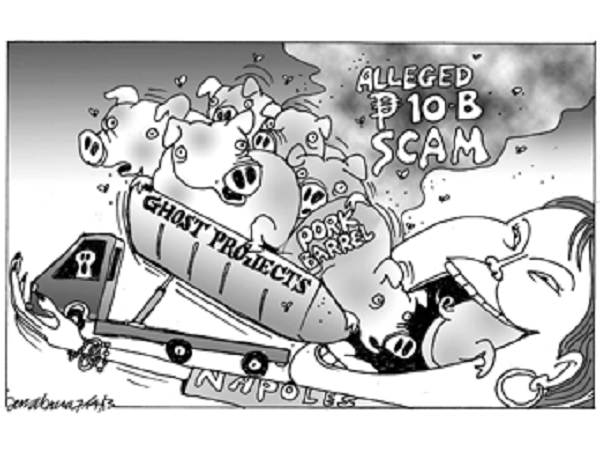 Could it be that we, the Filipino people, are uhm purging?
Could it be that we, the Filipino people, are uhm purging?
Like a cleansing of sorts.
It must get worse for better days to come.
[Shiver]
Come to think of it…
Years ago when I was diddling with governance (for my first MA, Public Policy),
I and I’m sure a bunch of us humorless library aficionados never imagined, not even in our wildest, most politically-incorrect dreams, that a President of OUR country (it could happen to yours but that’s for another post), would, after being President, run again for public office BUT for a much lower position.
Now, Aid-dunno bout you … ;P
But I have the highest regard for the Top Post of the Land, the Commander-in-Chief, the Chief Strategist of the Armed Forces, the Ultimate National Symbol…you get the drift.
I would expect a Former Head of Government not to altogether retire, but would instead take on a more dignified role in society. Like a Political Sage. Or a Godfather. Godmother. Uno…dos…tres…
Think Lee Kuan Yew.
Remember Madiba.
Now, I have nothing personal against our two Past Presidents who confused the whole academia by doing something that had no recorded precedents.
Former President Joseph Estrada is now Mayor of Manila.
Former President Gloria Macapagal-Arroyo is now under hospital arrest and an elected member of the House of Representatives, a Congresswoman.
Estrada’s charm is lethal (you have to be near it to believe it) and contrary to those Erap jokes, speaks English very well. I had interviewed Estrada on happy occasions (on his sprawling lawn) and not-so-happy ones (at his study where he spat fire at my cameraman for taking pictures of him without his signature jacket). I had interviewed Estrada as himself and while he was ‘in character’ when I gate-crashed his movie set for a much-needed real-life soundbite. One day I’m a much awaited guest, ushered in from the front gate of his Polk Street Mansion, the next day I’m a not-so-welcomed nuisance who had to literally crawl (think: anteater on steroids) her way in, from the back door. Okay, to be fair, that was the day Estrada was released from prison. I don’t do paparazzi for no reason.
As for Arroyo? Well, I remember being invited to interview her eldest son, Mikey, when they were still living at the Palace. We entered the palatial (but of course) bedroom and there he was, sprawled on the four-poster bed, in ala Cleopatra pose, next to his newborn daughter. The next few minutes, I listened patiently to his rendition of the ecstasies and heartaches of a new father. I actually thought it was cute. Or maybe I was too young.
Filipinos are a political bunch. Even those who are so poor they make a living selling their internal organs ( I have met them) will verbal spar with anyone on matters of the state. And make pretty sharp points, too. We seem to revel at the circus du soleil sheer madness of it all!
And then what?
[Silence]
I truly hope that all the noise will not make us lose our focus.
That we still have a nation to build.
And rebuild.
How do we end the vicious cycle of poverty in our country?
I used to believe that poverty will never end. I made this conclusion while reading a class assignment in Philosophy, Aristotle’s Politics, which talked about poverty pretty much like we talk about poverty today. No difference after thousands of years? Then poverty must be here to stay.
Until one day I got hold of Jeffrey Sachs’ The End of Poverty.
And never looked back.
For me, this was a first, a truly brazen, almost heretic proposition: To end extreme poverty in our lifetime.
Imagine that.
And Sachs had the mathematical equations to back his claim.
Sachs dabbled in the Business of Aid (knock! knock!) and every nation’s responsibility to look after others who are most in need.
For a recent term paper, I discussed the Business of Aid — what with the harrowing experience of Typhoon Yolanda still entangled in my consciousness.
My Professors, British and Proper (not their real names, I meant…) must have waved off my tendency to emoji (the topic is too close to home) and actually gave me a decent mark. Happy, I treated Mom, my Sister and Brother-in-law to wine and cheese. Theirs wine, mine cheese.
The Business of Aid: Broken Beyond Repair?
(Excerpts from an insomnia err academic essay)
By: Apples Jalandoni
Mention the word ‘aid’ to any Filipino these days and you will instantly see a face that will light up with joy and gratitude. Never before have the Filipinos witnessed such a massive outpouring of goodwill from the rest of the world. Truly, these are very unusual times. Last November 8, 2013, Typhoon Haiyan (locally known as Yolanda) made landfall in central Philippines. Strong winds and heavy rains ravaged towns after towns, leaving all forms of destruction at its wake. Flooding and landslides damaged homes, farmlands and most tragically, thousands of human lives. Meteorologists list Typhoon Haiyan as the fourth strongest tropical cyclone in world history (Masters, 2013). The first three being Typhoons Nancy, Violet and Ida which all made landfall in Japan in the 50s and 60s. But with fewer death tolls than the super typhoon that recently hit the Philippines.
The governments of the United Kingdom, Australia, United States, Denmark, and even fellow developing countries like Cambodia and Bangladesh all sent cash amounting to more than 12 billion pesos ($ 27,271,729.38). Funds from foreign governments comprise the biggest chunk of the cash donations, followed by private individuals, corporations, private foundations and international groups (“Aid Tracker”, 2013). Add to this the other forms of aid sent by many nations such as ships, airplanes and other search and rescue equipment and vehicles as well as relief goods like food, clothing and medicines. The United Nations also took on a major role in the disaster relief missions, headed by Valerie Amos, the UN Under-Secretary-General for Humanitarian Affairs and Emergency Relief.
However, after the initial wave of euphoria subsided, reality began to set in. Reports of incidents of aid misuse also began to surface. Could it be true that some donations like canned goods and other food items are being sold in a chain of supermarkets? Or that some local government officials charge their constituents for relief items? To address the growing concern of the public on the transparency of aid distribution, Philippine President Benigno Aquino III decided to appoint a ‘Rehabilitation Czar’. The President did not choose an engineer or a development expert, but an ex-cop and former Senator, Panfilo Lacson, who has a reputation as a crime buster. How the ‘Rehabilitation Czar’ will manage to appease the suspicious public while successfully rebuilding the typhoon-ravaged areas remains to be seen. Civil society groups and people’s organizations, meanwhile, got together to create an Aid Tracker, a web application that keeps track of all the funds that are coming in from donor countries, organizations and individuals.
As if the distribution of relief items is not challenging enough, there is still the actual rehabilitation of typhoon-affected areas, which is a longer, more arduous undertaking. The International Labor Organization (ILO), for instance, pledged to provide at least $500,000 to create temporary jobs as well as assist in the more long-term livelihood opportunities like small and medium enterprises. According to ILO statistics, 5.6 million workers have been affected by the typhoon, the biggest group or 32% (1,814,150) are wage workers in the service sector, followed by 23% (1, 263, 893) which are vulnerable workers in the agriculture sector (“ILO: Service sector”, 2013). But ILO’s funds will go to waste if they cannot forge a successful partnership with the country’s government agencies like the Labor and Employment Department as well as the Social Welfare and Development Department.
Therefore, the government, in turn, must also prove that it has the capacity to absorb and make use of the funds efficiently and effectively, with maximum transparency.
However, previous experiences have shown a dismal performance by the Philippine government in ensuring the proper implementation of development assistance from donor counties. For instance, in 2009, IBON Foundation, a Philippine-based research and development group, questioned the whereabouts of some $10 million in Official Development Assistance supposedly for disaster preparedness and prevention. 2009 was the year that another strong typhoon, Ondoy, hit the Philippines, this time flooding many parts of the nation’s capital. According to IBON’s monitoring, $4.8 million worth of disaster relief aid given by donor countries to government agencies was unaccounted for. The group cited the propensity of government officials to engage in corrupt practices, such as literally pocketing aid money, as the culprit for the lack of clear accounting of funds. IBON even recommended that foreign donations should be given straight to community-based civil society organizations because they know better than the government what the real needs of the people are and can be trusted more than the government (“Where did ODA”, 2013).
Then there is the perpetual problem of transparency and accountability in using ODA funds. In recent years, China, although not a member country of the Organisation for Economic Co-operation and Development (OECD) has been especially generous in offering funding assistance for supposed development projects in the Philippines. One example was the NBN-ZTE deal which began with the noble objective of setting up a national broadband network for the Philippine government. The deal was a $329.5 million contract between the Philippines and the Zhong Xing Telecommunications Equipment Limited (ZTE). To afford the project, the Philippine government needed to secure a loan from China, payable with interest. However, soon after the contract with ZTE was signed in Hainan, China, in April 2007, a series of exposes broke out claiming that the NBN-ZTE deal was anomalous. Allegations that no less than the former First Gentleman Miguel Arroyo and his cronies brokered the deal in China became news headlines, complete with photographic evidences of then President Gloria Macapagal-Arroyo, her husband and other government officials playing golf with ZTE businessmen in China. The events that followed were scenes straight out of an afternoon soap opera: the alleged kidnapping of one of the whistleblowers, the sudden disappearance of the Chief of the National Economic Development Authority (NEDA) and a politically-charged Senate inquiry that was shown on live television. In the end, President Arroyo had no choice but to cancel the project in October 2007.
Looking at the Philippine experience with foreign aid through the years, it is easy to empathize with William Easterly’s disdain over what he calls the ‘aid-financed investment fetish’ of the international donor community (Greig, Hulme and Turner, 2007, p 151). Easterly’s criticism is that aid can cultivate the bad habit of dependency, among poor countries, instead of empowering them to take ownership of their own progress. Moreover, aid provides a sort of cushion, through the negotiable credit terms, for recipient countries to not feel the urgency to make the projects succeed. Absorptive capacity is critical in the effectiveness of aid. This includes strong, non-corrupt and accountable leadership. As well as a social welfare system that will ensure that funds reach the intended and deserving beneficiaries. But in reality, even if some countries do not possess absorptive capabilities, they are still able to receive aid from donor countries. Easterly and Laura Freschi (2009) criticized the UK government for handing out direct budgetary support to governments of aid-receiving nations even if some of them have been accused of human rights violations, rampant corruption and non-democratic practices.
William Easterly (2006, p. 3) begins Chapter One of his book, ‘The White Man’s Burden’, by quoting an excerpt from Rudyard Kipling’s famous poem of the same title. Kipling’s poem was a response to the American colonization of the Philippines after the Spanish-American War in 1898. The poem talks about the ‘burden’ not just of the colonized people but even more so, of the colonizers. Indeed, it takes much patience and humility for the more developed and perhaps evolved human beings to industrialize and modernize the so-called barbarians. However, no matter how pure the intentions of the colonizers are to advance the interests of their captives, in the end, the recipients of their goodwill will still resent and rebel against them. And all will be for naught. This ‘burden’ is the recurring theme throughout Easterly’s book, as the West is said to succumb to their messianic delusions to end poverty in the rest of the world. “We all love the fantasy of being the chosen one”, says Easterly (2006, p.18), that is why the grandiose plans to feed all the hungry and provide mosquito nets in malaria-infested areas must be done. For Easterly, there is enough evidence to show that foreign aid has not really been successful in producing growth and fishing people out of poverty. Easterly describes how a typical African country received more than 15 percent of its income from foreign donors in the 1990s. But as aid increased, growth fell at same time. Easterly ( 2006, p.45)also pointed out that the common belief that Africa had always been condemned with low growth prior to foreign aid is not true because from the year 1965 to 1975, with meager aid, Africa was growing at 2 percent per year. Easterly’s book often refers to Jeffrey Sach’s ‘The End of Poverty’ as the culprit in perpetuating myths about foreign aid. For instance, Easterly debunks Sach’s theory that poverty is caused by a country trapped in a vicious cycle of no savings and poor technology. Easterly (2006, p.44) instead blames the country’s bad government with the belief that even the poorest of the poor can help themselves if they truly want to.
Jeffrey Sachs’ ‘The End of Poverty’ is a runaway bestseller that has long inspired many in the developing world. Most poignant is Sachs’ theory that poor countries just need to get their foot on the first rung of the economic ladder of development and they will take it from there. The problem is that the poorest of these countries are not even on the ladder yet, perpetually excluded from the race towards progress. And this is where aid may come in really handy. Sachs poses the question on whether rich countries can afford to help the poor. And of course, the answer is a resounding yes, complete with a simple calculation made by the World Bank that only 6% of donor income is actually needed to allow all 1.1 billion poorest people access to basic needs (Sachs, 2005, p. 290). Although Sachs does not forget to add his disclaimer, that this is in theory only, and that the actual implementation in the real world is also subject to real world forces. Like geopolitics.
The concerted efforts of the international community to deliver aid to calamity-beaten Philippines is proof that the aid business is alive and thriving. However, in the words of UN’s Valerie Amos, “while we increase our immediate efforts we are also looking to the future”. Livelihoods have been lost as whole towns were wiped out. Therefore, the longer term rehabilitation effort is most critical if we want to bring back normalcy and stability to the country. This is where Official Development Assistance should come in. Government officials must then give justice to foreign aid by ensuring transparency and accountability in all ODA projects. Furthermore, it is no secret that the generosity that comes with ODA also comes with certain conditions such as the advancement of the developed country’s political and commercial interests. Grants, for instance, have no repayment obligations but the recipient country would probably have no choice but to accept that the programme experts and consultants would have to come from the donor countries.
In a Financial Times article, William Easterly (2010) again criticized Sachs for still believing in the viability of aid, whether bilateral or the more improved multi-donor approach, when, for Easterly, the true engine of growth is really trade, fair trade. Easterly gave as an example the huge subsidies given to US cotton produces that allow them to “flood the world market” with cotton while adversely affecting the other producers of cotton elsewhere in the world, some of which are the poorest nations. According to Easterly’s calculations, just by eliminating the subsidies would increase the income of a million West African households by 8 to 20%.
Finally, ODA projects, such as key infrastructures or technology transfers, would be essential to development if these can inspire foreign investors to set up shop in the recipient country to show that they are really in for the long haul. However, if the ODA projects are not profitable, then the country would be better off with other sources of cash such as the Overseas Filipino Workers (OFW) remittances in the case of the Philippines. Again, as the Philippines as an example, because the economy is supposed to be doing well with a 7% GDP, the government should also have the ability to mobilize domestic resources for public investments. And then there are the other possible schemes like the private-public partnership through build-operate-transfer projects.
Ideally, as the developing country progresses, the dependency on Official Development Assistance (ODA) should also be diminishing. This is to make way for more sustainable sources like investment and trade.
P.S.
Immediately after Typhoon Yolanda hit the country, fellow Filipinos gathered for an instant fund-raising concert!
Citizens of the world also pitched in! There were a couple of kids, though a million miles away from the Philippines, sold Lemonade and Iced tea for typhoon families.
But the real challenge is in the rehabilitation of infrastructures and market systems to sustain a thriving community.
Help us rebuild our homes, our livelihoods, our lives.
Cheers!

